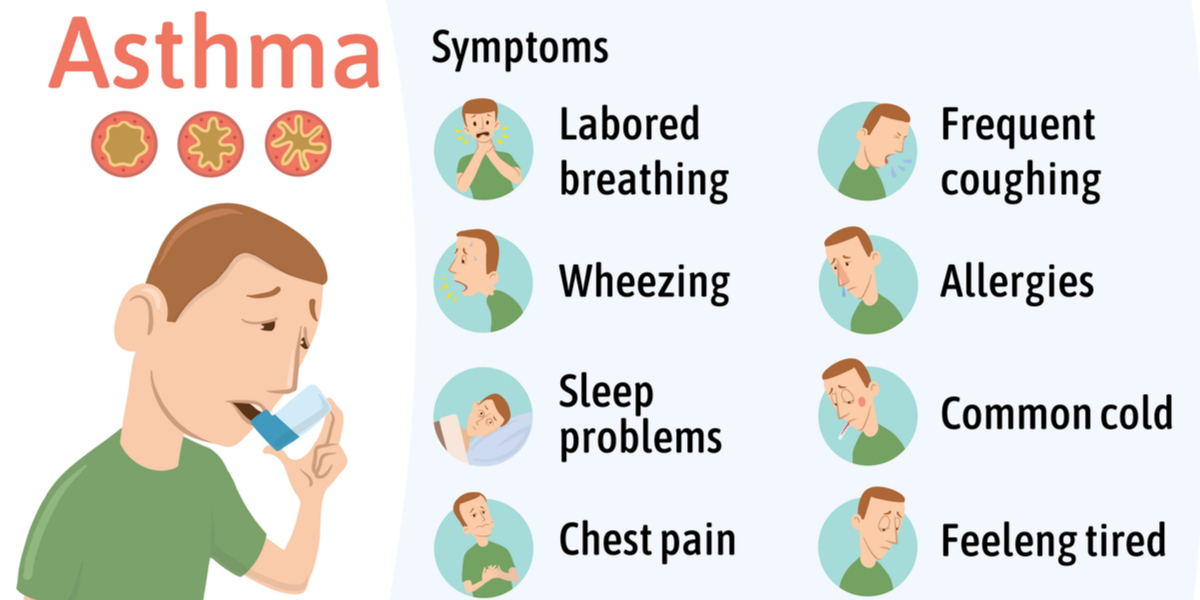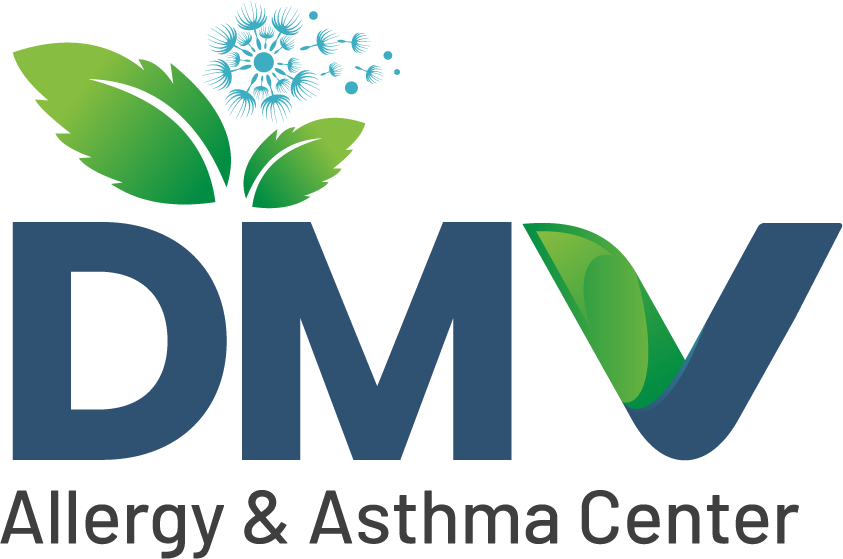Winter Asthma Checklist: Tips for Healthy Breathing
Asthma | January 31, 2025

As winter settles in, several asthmatic patients face increased challenges in managing their conditions. The combination of icy winds, dry air, and increased exposure to allergens make winters a challenging season for asthma sufferers.
Asthma is a long-term respiratory condition that causes inflammation and narrowing of the airways, making breathing difficult. Cold air, low humidity, and increased exposure to indoor allergens can trigger asthma attacks.
Severe asthma symptoms can cause an individual to experience difficulty when completing actions as simple as talking. Understanding the cause of severe asthma and recognizing its symptoms is crucial for effective management of asthma. In this piece, we will explore why and how asthma tends to worsen in winter, key symptoms to watch for, and preventive measures to help you recover and navigate the cold weather.
Common Winter Asthma Symptoms

More than 20 million Americans suffer from asthma, which causes nearly 1 million visits to the emergency room each year. Depending on the severity of an individual’s condition asthma symptoms can vary, but one of the universal signs indicating asthma includes aggravation due to the cold weather. Recognizing and treating these symptoms can help in the effective prevention of severe asthma attacks.
- Wheezing: Wheezing or high-pitched whistling when breathing is one of the common symptoms of asthma exacerbated by cold air. Wheezing occurs when the airways tighten and become inflamed.
- Shortness of breath: Asthma sufferers often experience difficulty breathing or a feeling of tightness in their chest when exposed to cold air.
- Coughing: Persistent coughing or chronic cough is a common but often overlooked symptom of asthma. Worse at night, chronic nature, dryness, and triggered by specific factors – in some cases coughing can be the only symptom of asthma in some individuals.
- Increased Mucus Production: When asthma is triggered by cold air, the body produces more mucus to try to protect the airways. This can lead to congestion, further difficulty breathing, and a feeling of heaviness in the chest.
- Fatigue: A less obvious but significant symptom of asthma is fatigue. Fatigue can cause constant tiredness, as the body expends extra energy to cope with decreased airflow. This can be particularly noticeable after any minimal physical exertion in cold weather.
- Chest Tightness: Caused by airway inflammation and narrowing chest tightness is one of the serious symptoms of asthma. Airway constriction, mucus build-up, and inflammation can be aggravated in winter due to the constriction of the airways caused by cold and dry air.
- Increased Use of Rescue Inhaler: If your asthma symptoms worsen in the winter, you may find yourself using a rescue inhaler more frequently to relieve symptoms like wheezing, coughing, and shortness of breath.
Experiencing any of the asthma symptoms mentioned above? Don’t wait—get the care you need at DMV Allergy and Asthma Center! Visit us in Alexandria, VA, or Washington DC, for expert treatment and relief. Book your appointment online today!
How is Asthma Classified?
Based on severity, symptoms, and underlying triggers asthma can be classified into four different categories. This helps a medical professional in tailoring effective treatment plans for different individuals.
- Mild Intermittent Asthma: Symptoms appear less than twice a week during the day, and less than twice a month during the night. A few asthma attacks can occur.
- Mild Persistent Asthma: It occurs three to six times a week. Symptoms occur three or four times a month during the night. Asthma attacks might affect everyday activities.
- Moderate Persistent Asthma: This involves daily asthma symptoms. Approximately five nights a month, nighttime attacks occur. Symptoms may affect regular everyday activities.
- Severe Persistent Asthma: This type of asthma is characterized by symptoms that occur during the day and at night. Asthmatic patients will have to limit activities with exertion.
Why Does Cold Air Trigger Asthma Symptoms?
The body maintains a stable internal temperature through thermoregulation, primarily mediated by blood flow. Blood vessels dilate to release heat in warm conditions and constrict in cold environments to conserve heat. In cold weather, the respiratory tract faces reduced warmth and humidity, leading to a cascade of physiological changes that impact asthma symptoms. Cold air can act as a potent asthma trigger for several reasons:
Airway Constriction
When cold air is inhaled, it causes the smooth muscles in the airways to tighten, narrowing the passages and making it more difficult for air to flow in and out of the lungs. This constriction can lead to asthma symptoms like wheezing, shortness of breath, and coughing.
Dry Air
Cold air tends to be dry, which can further irritate the already inflamed airways of asthma sufferers. Dryness can strip moisture from the lining of the respiratory tract, making it more susceptible to irritation and inflammation.
Increased Indoor Allergens
During winter, people spend more time indoors around allergens such as dust mites, pet dander, and mold thrive. These allergens can aggravate asthma symptoms and contribute to flare-ups.
Infections
Cold weather is also associated with an increased prevalence of respiratory infections such as the flu and the common cold. Infections can trigger asthma attacks by inflaming the airways, increasing mucus production, and causing further narrowing.
Reduced Air Circulation
The winter months are a time when homes are tightly sealed to conserve heat. This reduces the circulation of fresh air and can lead to a buildup of indoor pollutants that trigger asthma symptoms. Poor ventilation and dry air can exacerbate symptoms further.
Tips to Manage Winter Asthma

Managing asthma during winter requires a combination of prevention strategies, lifestyle changes, and well-planned medical treatment. Below are some of the key tips for managing winter asthma.
Prevention Strategies
Preventing asthma symptoms involves a combination of avoiding triggers, managing overall lung health, keeping our body warm, and exercising regularly. With proper prevention strategies, asthma attacks can be minimized, allowing for better control and quality of life.
Indoor Air Quality
Maintaining optimal indoor air quality is crucial for managing asthma symptoms. To improve indoor air, ensure proper ventilation by using exhaust fans and using air purifiers to reduce pollutant buildup. Use air purifiers with HEPA filters to remove allergens like dust, and pollen, and improve air quality. Control indoor humidity levels (30-50%) with a dehumidifier to prevent mold growth. Finally, be sure to maintain proper ventilation and remove other asthma triggers.
Medications and Inhalers
Designed to manage symptoms and prevent attacks, inhalers are cornerstone treatments for asthma. Inhalers deliver medication directly to the airways, providing fast and effective relief. Rescue inhalers (short-acting beta-agonists like albuterol) are used during asthma attacks to quickly relax airway muscles and restore breathing.
Controller medications can be taken daily to reduce inflammation, prevent airway swelling, and maintain long-term control. In severe cases, biologics or oral corticosteroids may be prescribed to target specific inflammatory pathways. Using medications as prescribed, alongside proper inhaler techniques, ensures better asthma control and improved quality of life.
Stay Active and Monitor Symptoms
Staying regularly physically active plays a vital role in strengthening the lungs and improving overall respiratory health, even for those with asthma. Practicing low-impact exercises including walking, swimming, or yoga can be beneficial depending on your age and other health considerations.
However, staying active requires caution such as always warming up before starting exercise, using prescribed rescue inhalers if needed before exercise, and avoiding strenuous activities in extreme weather conditions. Alongside staying active, regularly monitoring symptoms is crucial. Keep a daily log of breathing patterns, triggers, and peak flow readings to detect early signs of worsening asthma. Proactive symptom monitoring helps adjust treatment plans promptly, reducing the risk of severe flare-ups.
Workout Indoors
Indoor workouts are an effective strategy for staying active while minimizing asthma triggers. Prepare a clean and controlled environment in your workout area and gym with stable temperature and humidity levels. Activities like yoga, cycling, treadmills, pilates, or regular walking are excellent low-impact options. It’s always advised to start any of these activities after consulting your doctor to balance physical activity with asthma control.
Seek Medical Advice
In order to manage asthma effectively, you should consult a healthcare provider. Medical professionals suggest diagnosis depending on the severity of your asthma condition. They will check the specific triggers and design a thorough treatment plan.
Plan regular checkups, monitor your lung’s health and functioning, assess symptom control, and adjust medications as needed. Seeking on-time medical advice is beneficial to maintain symptoms such as wheezing, chest tightness, and excessive reliance on severe asthma. Communicate proactively with your healthcare provider and ensure better treatment reducing the risk of complications.
Conclusion
Winters can be challenging weather for individuals with asthma. With the right strategies, you can keep symptoms under control and breathe easier during the colder months. Stay warm, maintain optimal indoor air quality, follow your prescribed treatment plan, and avoid common triggers like cold air and respiratory infections. Regularly communicate with your healthcare provider to ensure your treatment plan is up-to-date and tailored to your needs, and enjoy the season without letting asthma hold you back.
FAQs:
-
What’s the best way to prepare for asthma in winter?
Work on an action plan to maintain your health and stay active even during winter. Utilize the help of your doctor if needed, stock up on necessary medications, conduct a whole-body checkup, and make sure to keep your environment warm. Here are some ways to prepare for asthma in winter:
- Create an action plan
- Stay in a warm environment
- Stay hydrated
- Avoid triggers
- Get flu shots
- Take medications
- Wash your hands
- Get enough rest
-
What winter asthma treatment options are there?
Managing winter asthma requires a combination of treatment and strategies:
- Inhaler & medications
- Staying in warm environments
- Keep your body temperature maintained
- Nebulizer
- Allergens Management
- Exercise and regular workout
- Lifestyle adjustments
-
What to do if someone is having a sudden asthma attack?
Follow these steps when someone is having a sudden asthma attack:
- Stay calm and avoid creating a panic situation
- Apply a ventilator or other ways to maintain oxygen level
- Loosen tight clothes
- Use a rescue inhaler
- Call for emergency help immediately
